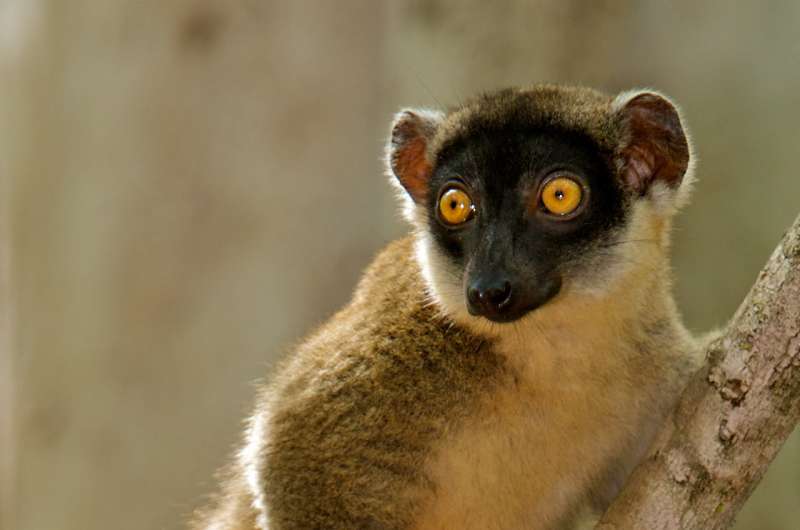For lemurs, size of forest fragments may be more important than degree of isolation

Occurrence probability of three lemur species in tropical dry forest increases with fragment size but can increase or decrease with fragment isolation depending on the species, according to a study published May 9, 2018 in the open-access journal PLOS ONE by Travis Steffens and Shawn Lehman from University of Toronto, Canada.
Lemurs live only in Madagascar, and nearly all species are at risk of extinction primarily due to habitat loss and fragmentation. The independent effects of forest loss and of forest fragmentation are not well understood, however. To assess the relative impact of these threats, Steffens and Lehman surveyed lemurs in fragmented dry deciduous forest in Ankarafantsika National Park, Madagascar between June and November 2011, observing six lemur species in 42 forest fragments. The researchers then used incidence function models to examine whether the lemurs formed metapopulations, spatially-separated populations within a species, in a fragmented landscape and under different forest fragmentation conditions.
In their simulations, the researchers found that three of the lemur species did form metapopulations in forest fragments. Within these metapopulations, occurrence was affected by both forest fragment size and isolation. However, fragment size appeared to be more important in determining lemur occurrence, with larger forest patches being associated with increased lemur occurrence.
Madagascan forests are becoming increasingly fragmented, and this work helps to clarify how lemurs respond. It appears to be helpful to use a metapopulation approach when studying lemurs, and maintenance of habitat area may be crucial to maintaining populations in this fragmented landscape.
"Some lemur species are capable of tolerating high levels of habitat loss and fragmentation by forming metapopulations," says Travis Steffens. "In metapopulations occurrence probability is positively related to habitat area for each species while isolation has species-specific positive, negative and neutral impacts on occurrence probability."
More information: Steffens TS, Lehman SM (2018) Lemur species-specific metapopulation responses to habitat loss and fragmentation. PLoS ONE 13(5): e0195791. doi.org/10.1371/journal.pone.0195791
Journal information: PLoS ONE
Provided by Public Library of Science



















